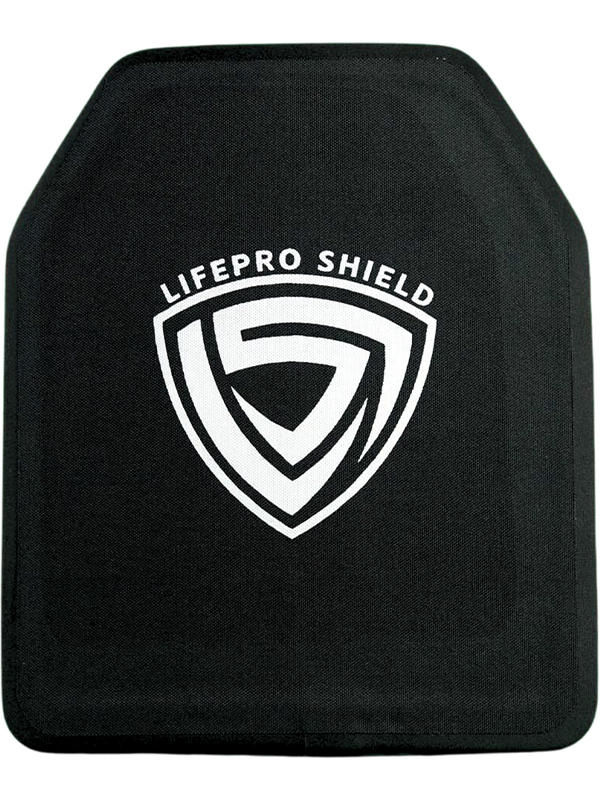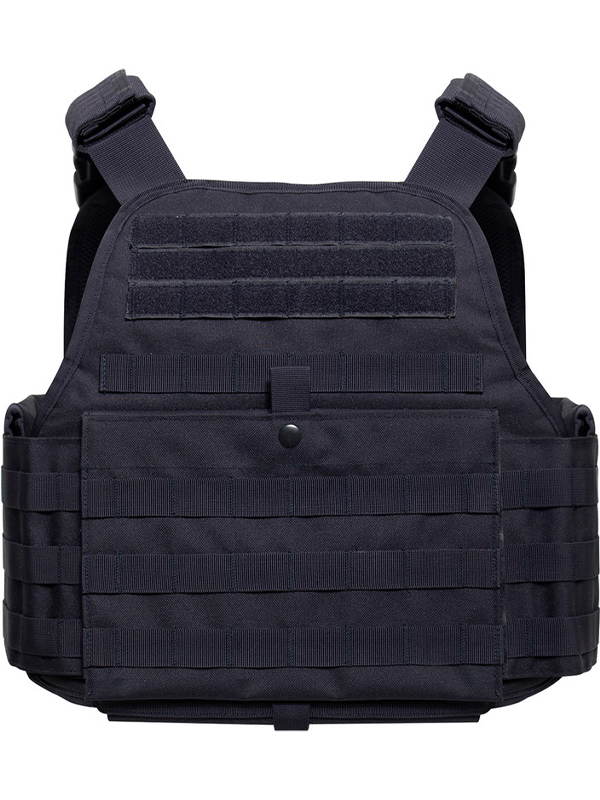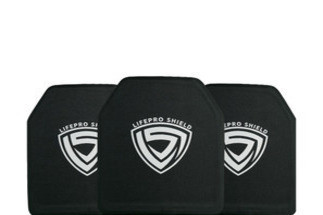25th Aug 2023
Understanding NIJ Armor Ratings
As the world advances, so does the technology designed to protect us. One of the most effective ways to be prepared is through the use of advanced body armor. This armor is meticulously rated by the National Institute of Justice (NIJ), the authoritative body for setting standards in civilian ballistic protection.
In this blog, we focus on NIJ Armor Level Ratings – a crucial aspect in understanding the efficacy of body armor. To comprehend this, we first dissect the fundamental components of wearing body armor: the ballistic panel and the carrier. The ballistic panel is the part of the armor that actually protects you from bullets, while the carrier is the garment that holds the ballistic plate in place.
Navigating the Frontiers of NIJ Armor Level Ratings
If you're shopping for lightweight body armor, it's important to understand the different ratings and levels of protection that are available. The NIJ Armor Level Ratings are a set of standards that determine the amount of protection that body armor offers. They are based on standardized tests that measure the amount of energy the body armor absorbs when a bullet or other projectile is fired at it.
The NIJ Armor Ratings provide civilians, law enforcement and other professionals with the necessary information to make informed decisions when selecting body armor. The range is from Level II to Level IV, with Level II providing the least amount of protection and Level IV providing the most. Let's take a closer look at each NIJ levels of protection.
NIJ Level IIA Armor Rating: A Balance of Protection, Comfort, and Lightweight Design
This type of armor offers good protection against most handguns and small-caliber rifle rounds. It is also relatively lightweight and comfortable to wear, which makes it a good choice for many people.
Level IIA armor must meet certain criteria in order to be considered effective. The armor must be able to stop a .357 Magnum bullet fired from a 4-inch barrel, as well as a 9mm bullet fired from a 16-inch barrel.
Level IIA armor is usually made from Kevlar or other similar materials. The armor is typically available in a vest or jacket form, and can also be found in other clothing such as shirts and pants.
While Level IIA armor offers good NIJ levels of protection, it is important to remember that it is designed for lower velocity rounds. Consider Level III or higher for protection against most modern weapons.
NIJ Level II Armor: A Fusion of Lightweight Comfort and High-Grade Protection
Level II armor is typically composed of multiple layers of hard materials, such as ceramic or metal plates, as well as soft materials, such as Kevlar or other bullet-resistant fibers. The combination of these materials provides a high level of protection against a variety of handgun and rifle rounds.
One of the benefits of NIJ Level II Armor Rating is that it is typically lighter and more comfortable to wear than other levels of armor. This is important for officers who need to wear their armor for long periods of time, as it can help to reduce fatigue.
Another benefit of Level II armor is that it provides protection against low-velocity rounds while still being less bulky and intrusive than Level III armor. This makes it a good option for officers who need a high level of protection but also need to be able to move and operate quickly and efficiently.
If you are looking for high NIJ levels of protection but want to maintain mobility and comfort, then Level II armor may be the right choice for you. Consult LifePro Shield to find the right armor for your specific needs.
NIJ Level IIIA Armor: Supreme Defense Against Small Arms Threats
If you are looking for the highest level of protection against small arms fire, then you need to look for NIJ Level IIIA Armor Rating. This type of armor is typically made from ballistic materials like Kevlar or ceramic and is designed to provide the wearer with complete protection against handgun and rifle rounds.
Of course, as with anything else, there are a few downsides to NIJ Level IIIA armor rating. Because it is so heavy, it can be somewhat uncomfortable to wear for long periods. Overall, the NIJ Level IIIA Armor Rating is an excellent option for those needing the highest protection against small caliber rounds.

NIJ Level III Armor Rating: Safeguarding Against High-Velocity Rifle Rounds
NIJ Level III Body Armor is designed to protect against high-velocity rifle rounds. This includes ammunition like the 7.62 x 51 mm NATO round and the .300 Winchester Magnum. Level III armor will also stop lower-velocity rounds like the .223 Remington and the 5.56 x 45 mm NATO.
Level III armor is generally constructed of hard materials like ceramics or steel. This type of armor is much heavier and bulkier than lower levels, making it more challenging to wear for extended periods of time. However, the extra weight and bulk can be worth it if you know you'll be in a situation where you might be up against high-velocity rounds.
There are a few different types of products that offer Level III protection. Hard armor plates are designed to be inserted into bulletproof vests or other type of clothing. These plates usually provide protection on the front, back, and sides of the torso.

If you're looking for the highest NIJ levels of protection possible, NIJ Level III armor rating is a good option to consider. This type of armor is designed to stop high-velocity rifle rounds, and it's made from hard materials that can provide excellent protection. Remember that Level III armor will be heavier and bulkier than lower levels, so make sure to check how much each plate will weigh before you make your purchase.
NIJ Level IV Armor: Unrivaled Firearm Protection
NIJ Level IV Body Armor is some of the highest quality armor available on the market today. It is able to protect the wearer from some of the most powerful firearms out there, making it an essential piece of equipment for law enforcement and military personnel.
NIJ armor ratings are incredibly important when choosing the right armor for the job. Level IV armor is designed to stop Armor-Piercing (AP) rounds, and is thus perfect for use in high-risk situations where there is a risk of being shot by a powerful rifle.

If you are in the market for some high-quality armor, then Level IV armor from LifePro Shield is definitely worth considering. It will provide you with the best possible protection against firearms and could literally save your life in a dangerous situation.
Advancing Armor Fronts: Exploring Enhanced Defensive Alternatives
There are a lot of different ways that you can go about protecting yourself. You can wear hard armor plates, soft armor, or backpack armor. But what is the best way to protect yourself?
The answer to that question depends on your situation. If you are in the military or law enforcement, you’re likely more concerned about rifle rounds. In that case, you should wear Level IV. If you are a civilian, however, Level III will suffice.

Ballistic plates are made of special materials designed to stop high-velocity rounds. They are usually made of ceramic or steel and can be inserted into plate carriers. Ballistic plates can provide extra protection against rifle rounds but are also heavier and more expensive than other options.
Bulletproof vests typically have the plates already inserted and are designed to stop handgun rounds. They are usually lighter and less expensive than ballistic plates. Bulletproof vests can provide good protection against handgun rounds, but they will not stop rifle rounds.
So, what's the ideal NIJ armor rating for you? Ultimately, it hinges on your specific requirements. Ballistic plates may be too heavy for an officer who is more interested in the flexibility a vest offers at a higher level. In contrast, another officer on the same force may be willing to sacrifice flexibility for additional protection.
Ensure Armor Integrity: Prioritize NIJ Compliance for Optimal Protection
As a LifePro, you want to ensure your armor is up to par. The best way to do this is by checking the NIJ armor ratings. This will give you a good idea of what level of protection your armor can provide.
In summary, the six levels of NIJ armor ratings and protection are as follows:
- Level II: This armor protects against 9mm full metal jacketed bullets with a mass of 124 grains and a velocity of up to 1,345 feet per second, as well as .357 Magnum jacketed soft point bullets with a mass of 158 grains and a velocity of up to 1,400 feet per second.
- Level IIIA: This armor protects against 9mm full metal jacketed bullets with a mass of 124 grains and a velocity of up to 1,345 feet per second, as well as .44 Magnum lead semi-wadcutter bullets with a mass of 240 grains and a velocity of up to 1,400 feet per second.
- Level III: This armor protects against 9mm full metal jacketed bullets with a mass of 124 grains and a velocity of up to 1,345 feet per second, as well as .308 Winchester full metal jacketed bullets with a mass of 168 grains and a velocity of up to 2,800 feet per second.
- Level IV: This NIJ armor rating is for armor that protects against .30-06 Springfield armor-piercing bullets with a mass of 166 grains and a velocity of up to 2,880 feet per second.
- Level V: This armor protects against .30-06 Springfield armor-piercing bullets with a mass of 166 grains and a velocity of up to 2,880 feet per second, as well as 7.62mm NATO armor-piercing bullets with a mass of 152 grains and a velocity of up to 3,025 feet per second.
- Level VI: This armor protects against .30-06 Springfield armor-piercing bullets with a mass of 166 grains and a velocity of up to 2,880 feet per second, as well as 7.62mm NATO armor-piercing bullets with a mass of 168 grains and a velocity of up to 3,180 feet per second.
No matter what NIJ levels of protection you need, LifePro Shield has you covered. Contact us for assistance in choosing the right plates and carriers for your needs.

